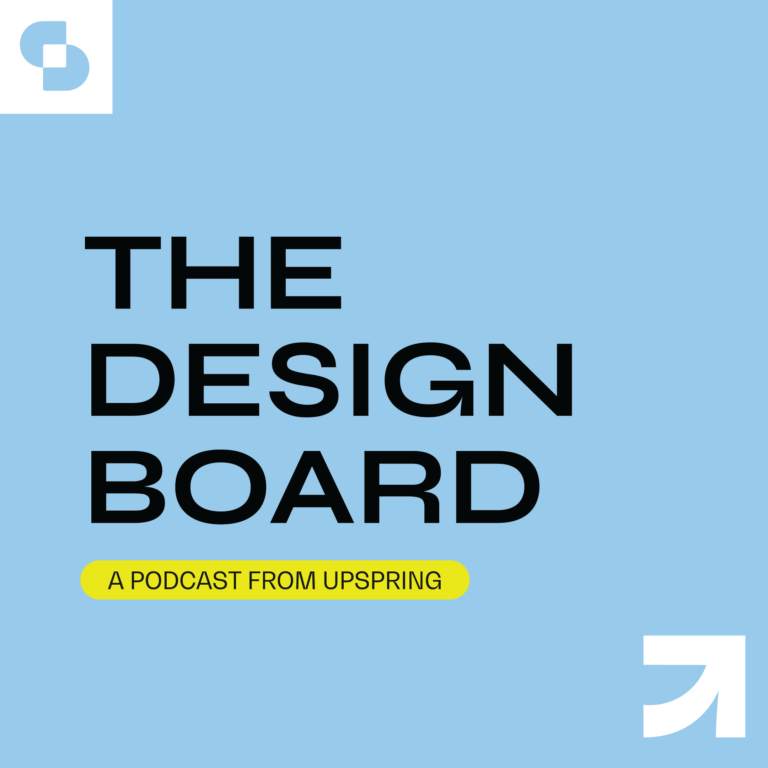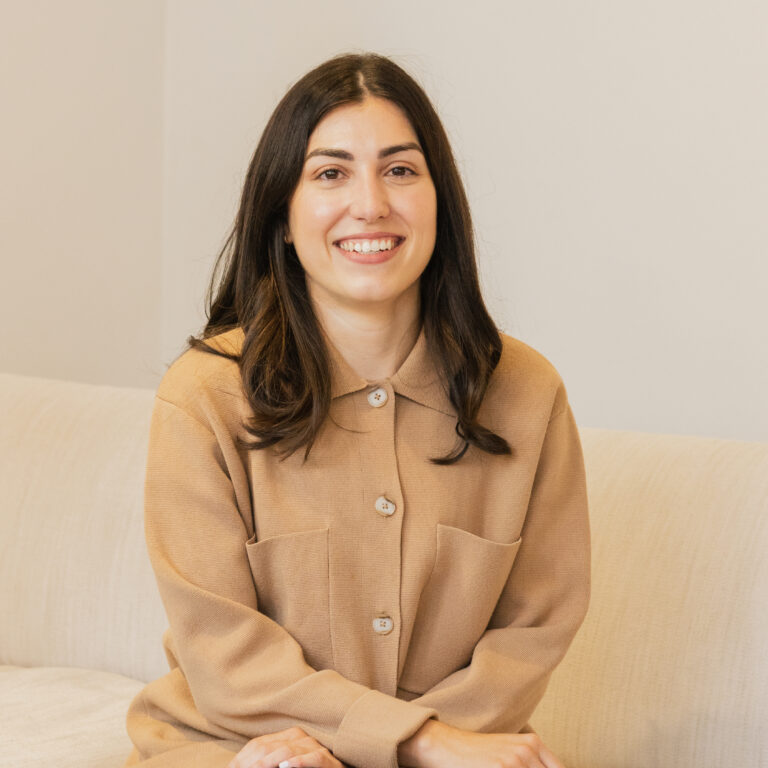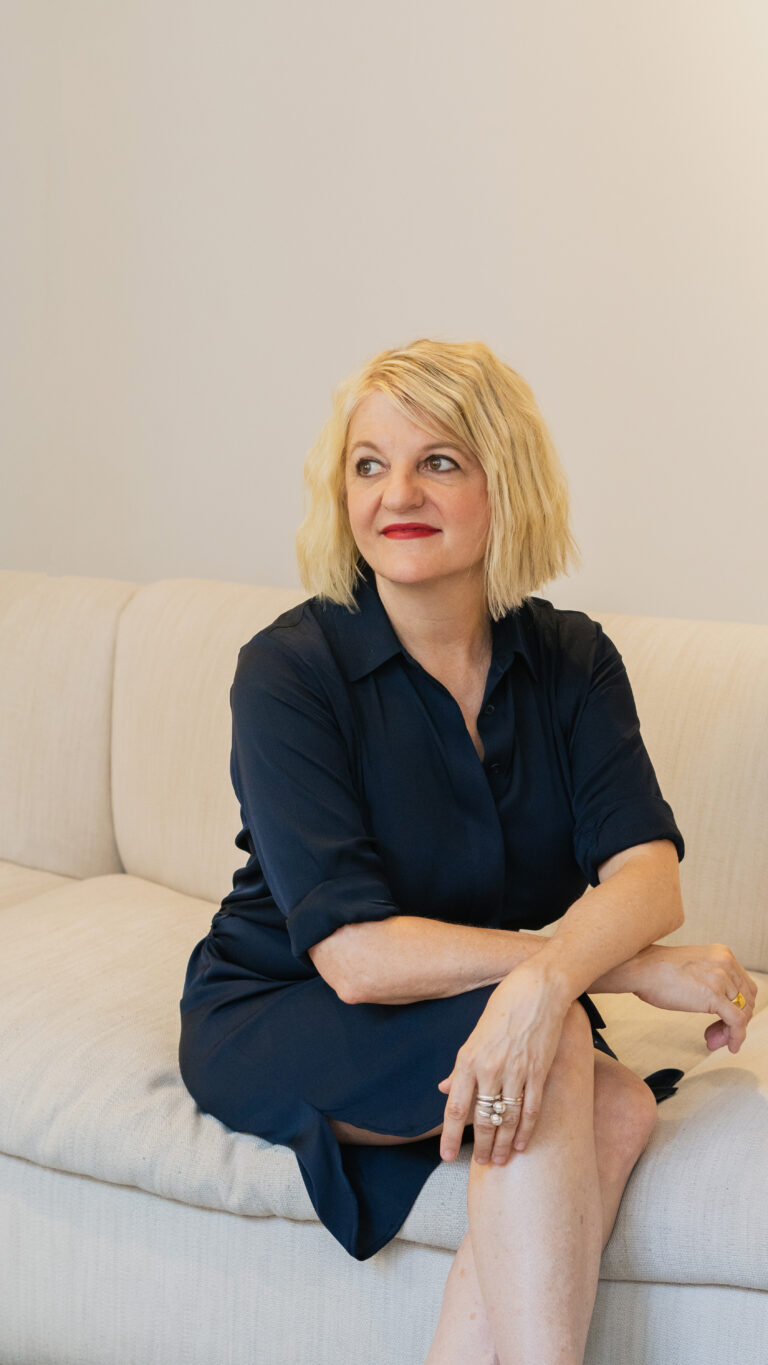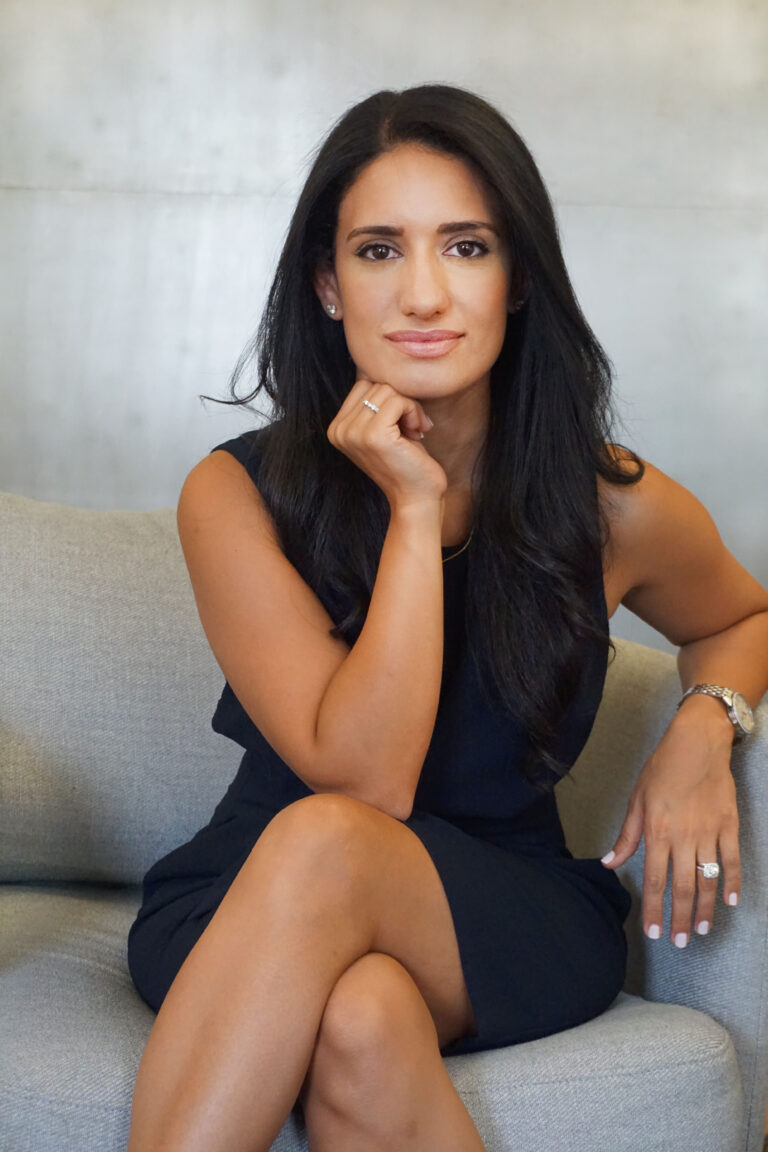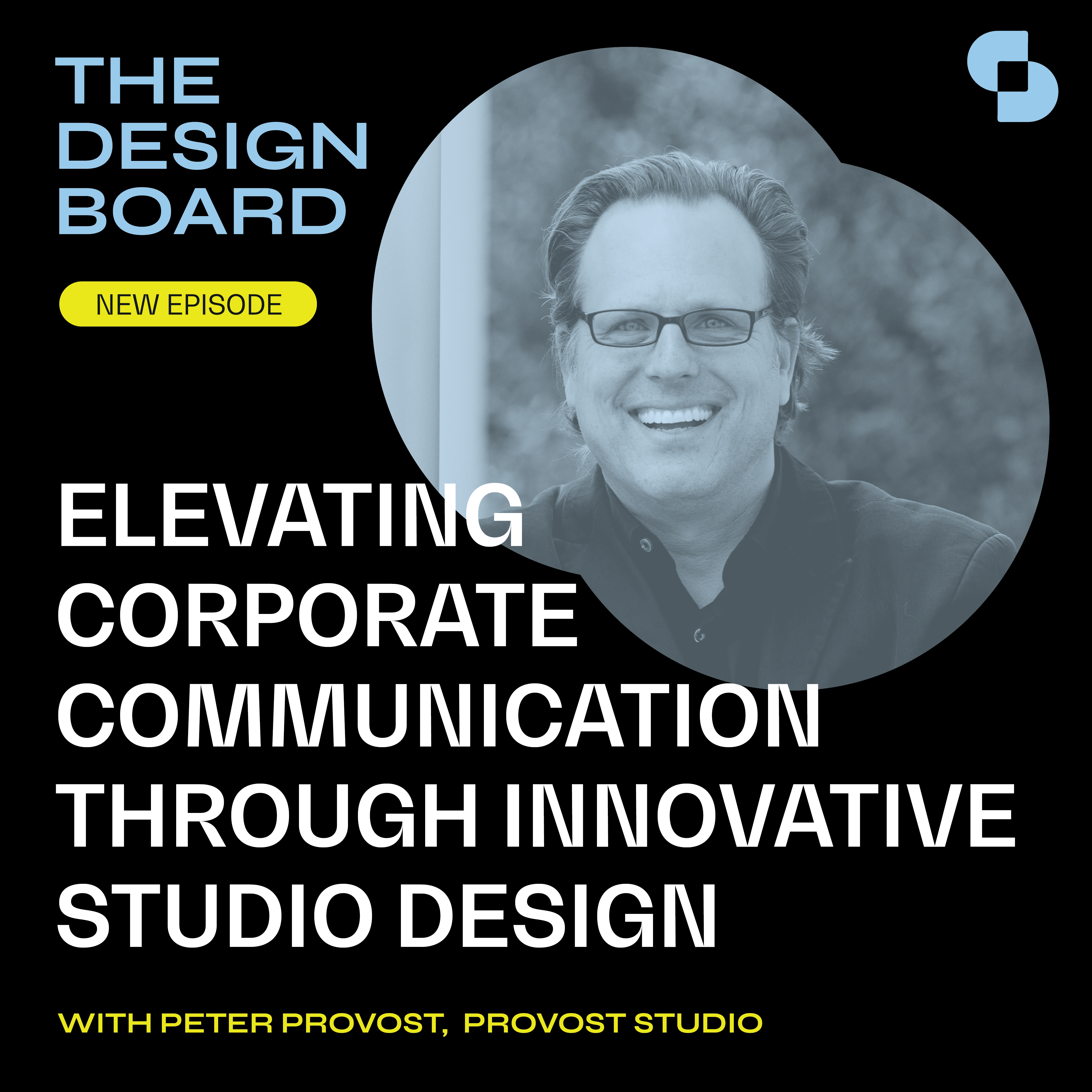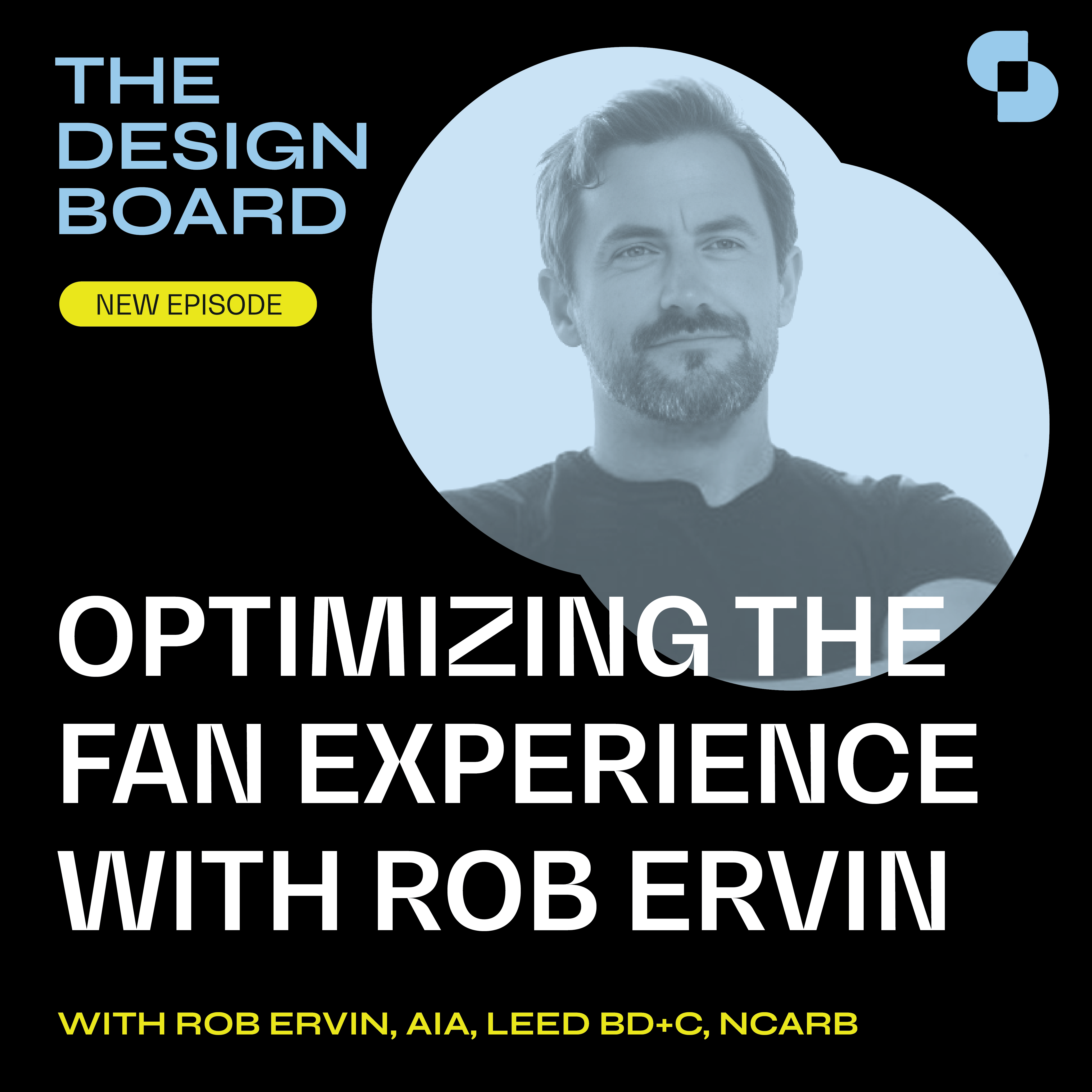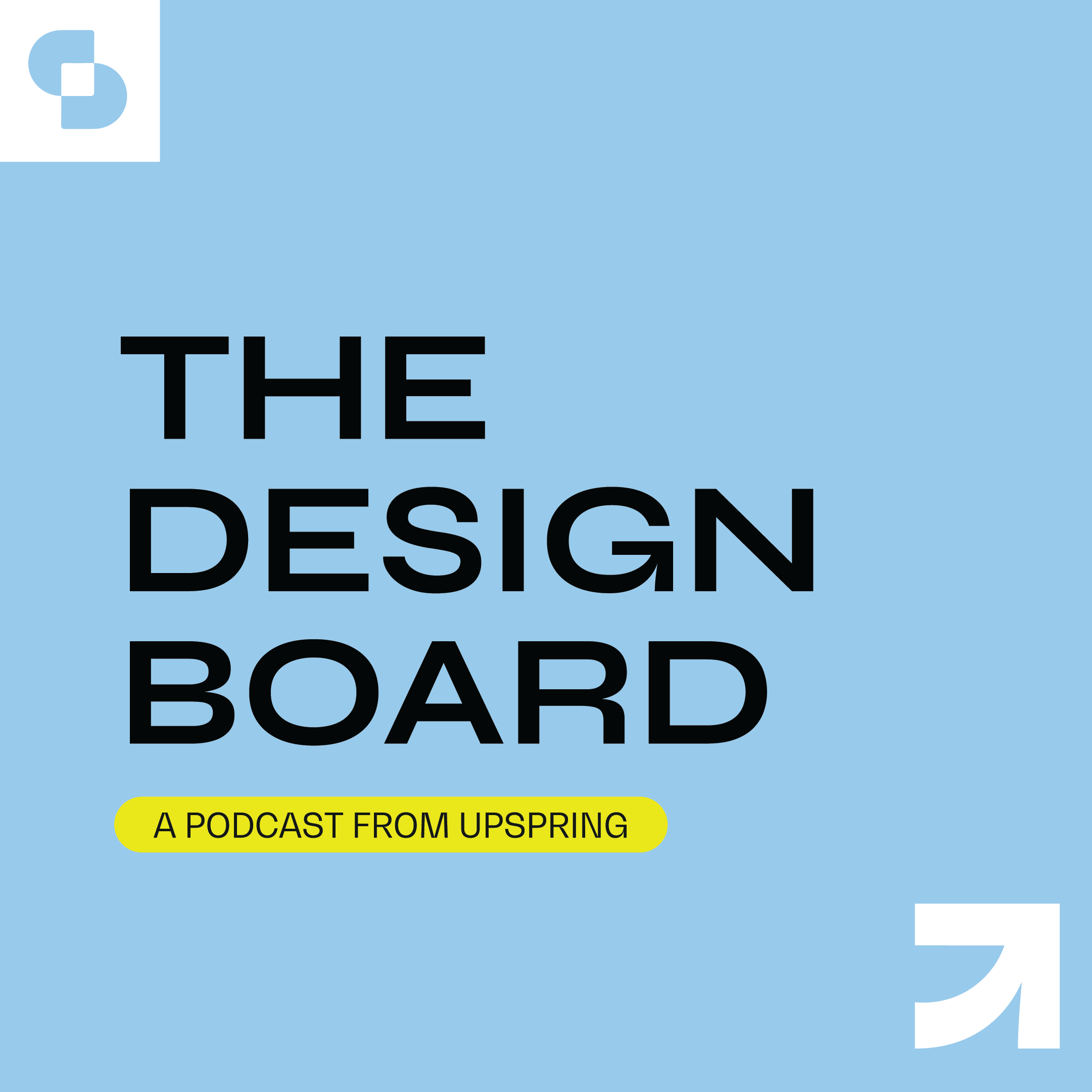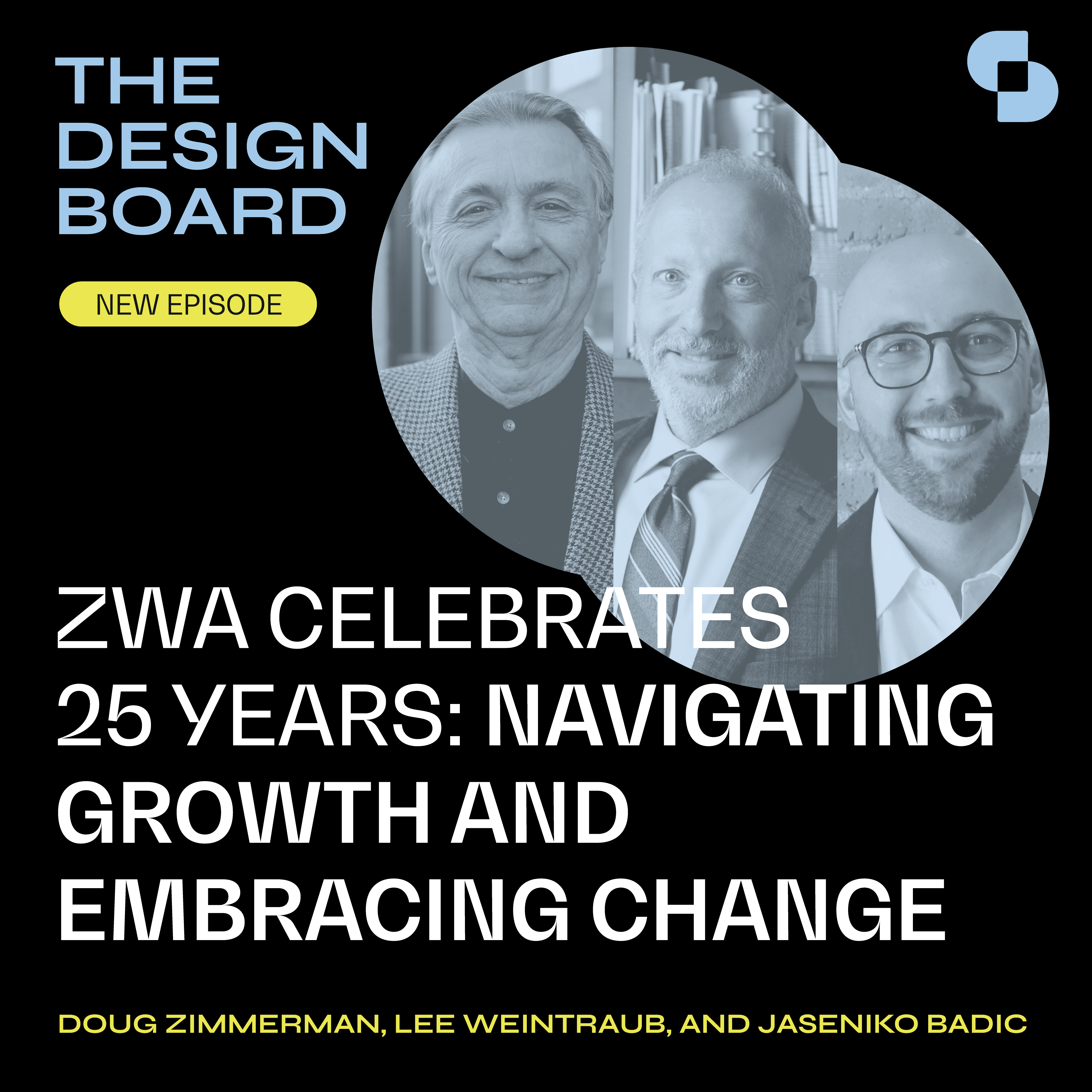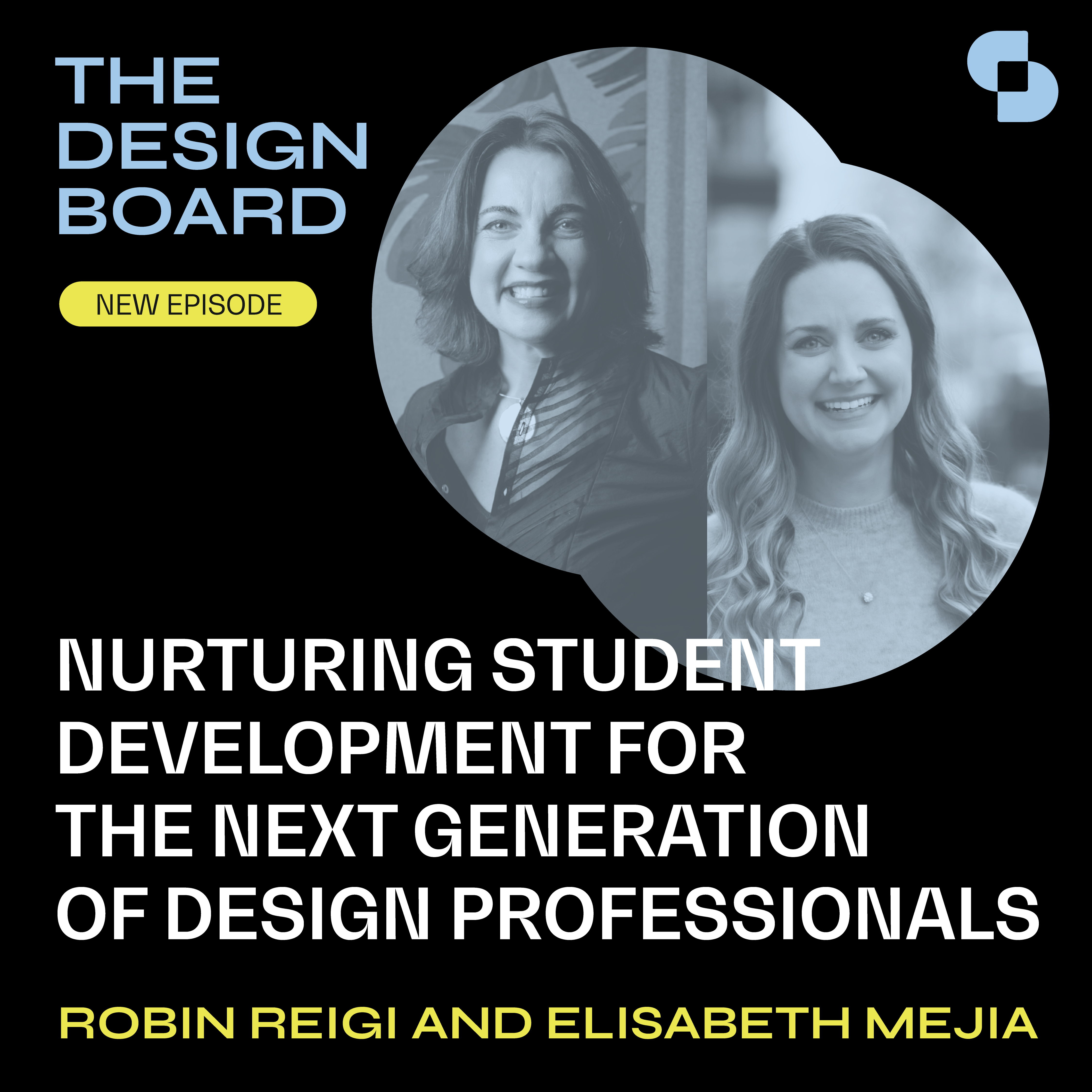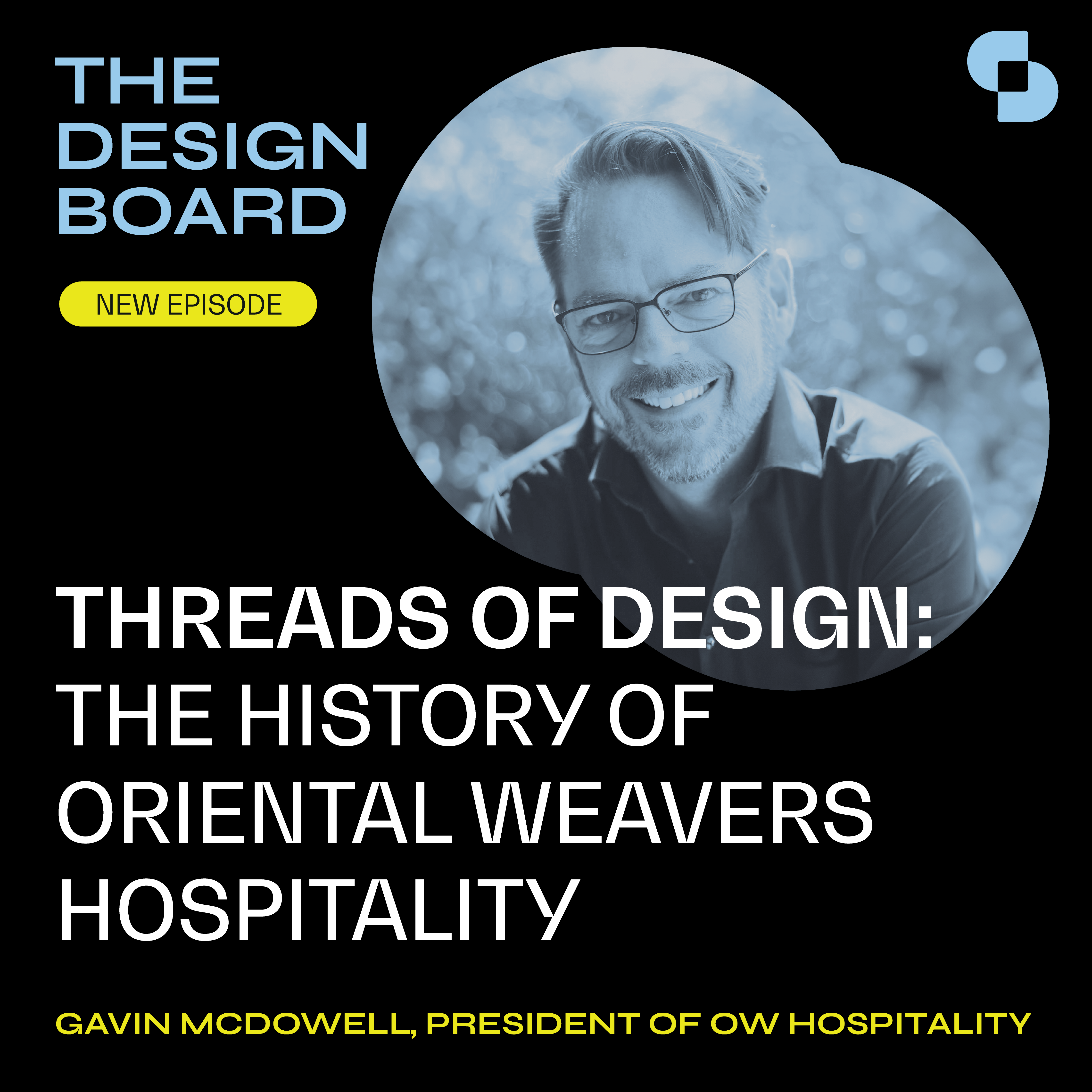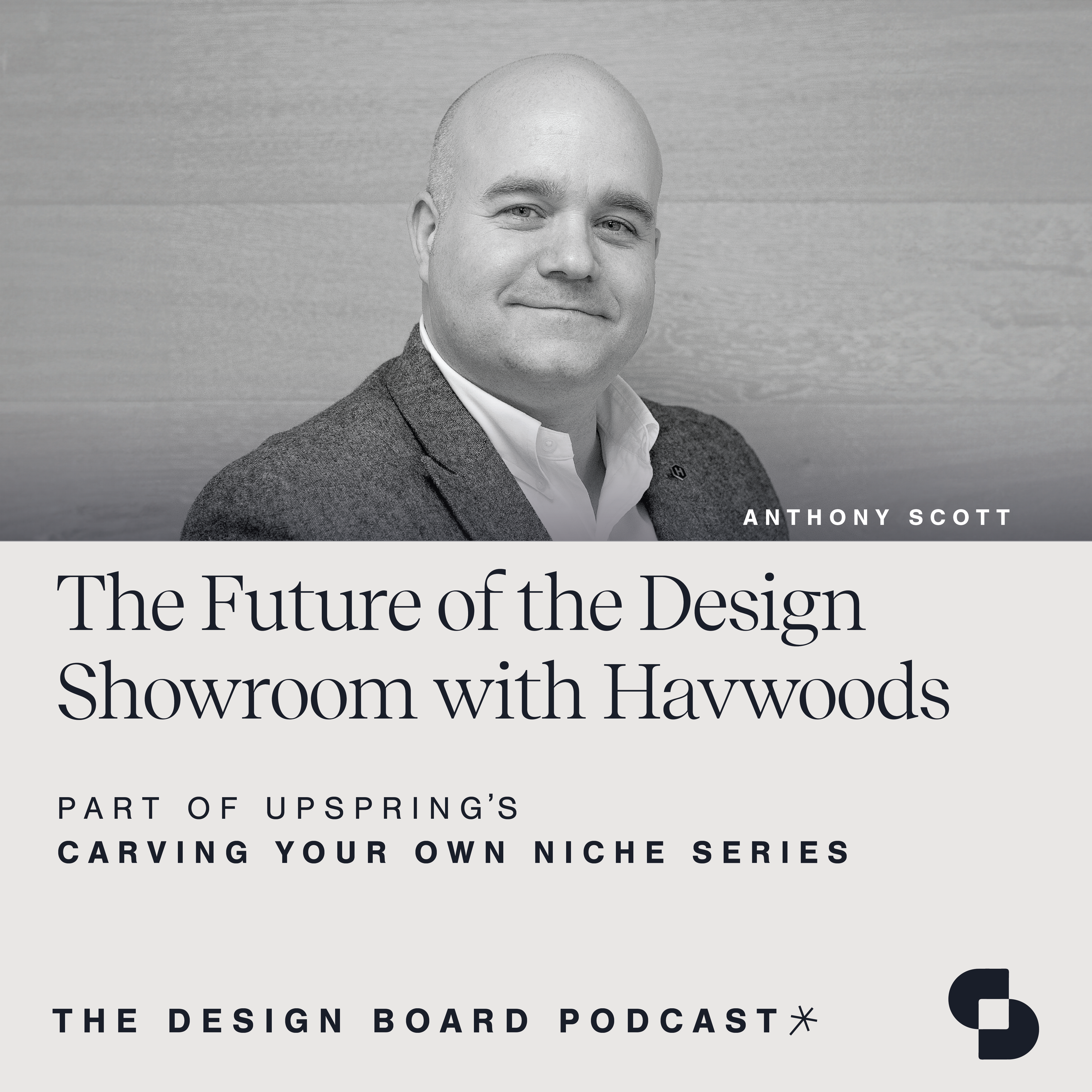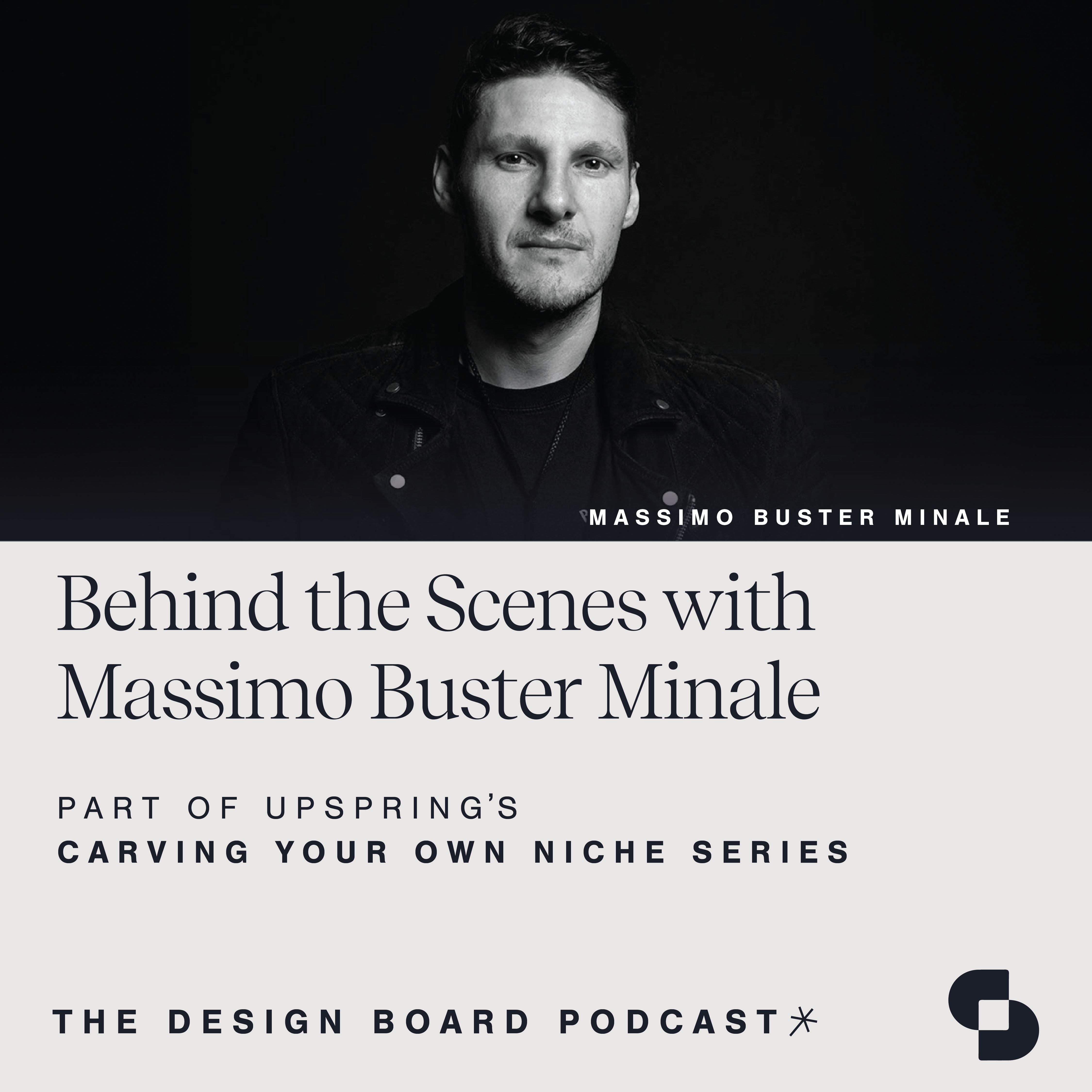Join us for a captivating discussion as we dive into the world of design with Edith Ponciano, founder of EP Atelier. In this episode, Edith shares her journey from her time as a Design Director at Gensler to founding EP Atelier, a hospitality lifestyle interior design firm dedicated to creating spaces that embody clients’ values from concept to completion.
The Design Board, by UpSpring, is a proud member of SANDOW Design Group’s SURROUND Podcast Network, home to the architecture and design industry’s premier shows.
Speaker 1:
Welcome to The Design Board, a podcast created by the team at UpSpring, that focuses on design, development, and everything in between. We invite innovators in our industry, and explore topics that support your growth in every way. The Design Board is a proud member of SURROUND, a podcast network from SANDOW Design Group, featuring the architecture and design industry’s premier shows. Check it out at surroundpodcasts.com.
Susan Fernandez:
Welcome everyone, to The Design Board, a podcast by UpSpring, that focuses on design, development, and everything in between. We host innovators in our industry, and explore topics that support your growth in every way. I’m your host today. My name is Susan Fernandez, and I’m joined with Edith Ponciano, founder of EP Atelier. EP Atelier is a hospitality lifestyle interior design firm dedicated to creating interiors that reflect their clients’ personality and lifestyle. And they do this by capturing their design dreams and making them a reality. They provide a holistic vision for each project, and create spaces that embody and encapsulate its clients’ values, from concept to completion. As the founder and principal of EP Atelier, Edith values a creative, team-based process, and has learned the importance of strong client relations, and clear design ideas, based on a cross-disciplinary collaboration. She is passionate about translating brands into spaces, to create memorable environments and authentic experiences.
During her time at Gensler, as design director, impacting and transforming sports venues interiors, Edith led the design for notable sports venues, including BMO Stadium, which is formerly Banc of California, Chase Center Arena, Los Angeles Football Club training facility, Las Vegas Aces training facility, Q2 Stadium, and Snapdragon Stadium. Edith’s design work has been featured in a number of publications, including Interior Design, Boutique Design magazine, Sports Business Journal, and VenuesNow. In 2021, Edith was recognized by Sports Business Journal’s next gen architects, and Boutique Design’s class of boutique ’18 honoree, which celebrates designers who are creating today’s and tomorrow’s most buzzed about hospitality venues. Edith, it is a pleasure to welcome you to The Design Board.
Edith Ponciano:
Hi, Susan. Thank you for having me. This is such a wonderful opportunity.
Susan Fernandez:
That was a really impressive resume. You’ve accomplished quite a bit in your career already. And you’re very young, so this is really exciting. Let’s start at the beginning. What exactly inspired you to become a designer, in the first place?
Edith Ponciano:
For me, ever since I was a kid, I always was fascinated with interior design. And I quickly started to follow design shows on TV. I started to read blogs, when that was popular, and definitely looked at a bunch of different design publications. And that’s how design started to pique my interest. And one of my earliest hands-on experiences was, when my family would move, my mom really gave me the freedom to engage on decorating our home, and selecting the finishes, the furniture, everything that was involved. By then, I really knew that I wanted to make this a career. After I graduated high school, I applied to FIDM, which is the Fashion Institute of Design & Merchandising, here in LA.
And I remember my last year, we had our two thesis class, residential one, and a commercial thesis. And the commercial thesis class just blew my mind. I had never really knew what it was like to work on a large scale project. And we had to design some public areas for a hotel. And that’s, really, when I knew how much impact you can make on people’s experiences. Right after I graduated, I applied for an internship at Gensler’s hospitality studio, which, luckily, I got. And then, over the years, I transitioned over to their sports practice area. That’s a little sum of everything.
Susan Fernandez:
Wow. That’s really interesting. I love that your mom did that for you. That’s very cool. It shows a lot of faith. And she was right. Speaking of Gensler, and your career there, you’re quite young to have gone out on your own. It seems like you’ve always been a self-starter, but what made you decide to start your own firm? I think a lot of designers and architects think about it, but they’re reluctant to make the move. What made you decide to do that?
Edith Ponciano:
I would say, taking the leap to go independent was definitely a big move. And over the last two years or so, the timing just felt right for me, for a number of reasons. And I would say, after being in the industry for over a decade, I was really fortunate to be surrounded by so many entrepreneurs. And that really started to shift my mindset. Over time, it really started to make me realize that I could take control of my own projects, and create even more impact, particularly in the type of work that I was working on, like sports venues and hospitality. I knew that was my passion, so I wanted to continue to work on these project types. And that, ultimately, was why I wanted to do it. And lastly, I would just say, I really wanted to create my own culture for the firm. For me, it was really about creating empowerment and transparency, something that could serve as building blocks for the future, and create more of a platform for mentorship and nurturing, both for individuals and a collective growth. It’s exciting. Now, being in it for a year and a half.
Susan Fernandez:
Yeah. That is really interesting. I love that the culture piece was so important to you. And that makes sense.
Edith Ponciano:
Absolutely.
Susan Fernandez:
Yeah. That makes a lot of sense, because you’ve definitely been a self-starter all your life, then really understanding how that translates into a business, and how culture is really what feeds a company.
Edith Ponciano:
Yes. Agreed.
Susan Fernandez:
EP Atelier is a hospitality lifestyle design firm. And you are dedicated to creating interiors that reflect your client’s personality. And I love this idea, that you do this through capturing their design dreams, and making them a reality. How did you come up with this concept?
Edith Ponciano:
Yeah. I would say that it was definitely influenced by, obviously, my specialized experience. Designing these large scale projects, you really have such a profound impact on so many people’s experiences, and creating such amazing memories for them. And it’s, really, more than just creating a beautiful space, and the aesthetics. It’s, really, committing to capturing those moments for people, and forging those lasting memories. These are spaces that people go. And they’re going there with groups of friends, and with their family, to really enjoy… Whether it’s a game or a concert. And I want to create these meaningful experiences for them, and also for our clients. I would say, the customization factor is such a central approach for us. Each project that we have taken on is, really, tailored to be unique for the client and, really, the surroundings. It is for the people that will be attending it. That’s, really, the gist of it.
Susan Fernandez:
Yeah. That really speaks to your passion behind that. I think that it really signals the understanding of the younger generations in design firms to, really, embrace, and want to create this transformation, and these spaces for people to have these intimate, personal moments within the arena of a big public space. I do believe that is just such a gift of the millennials and Gen Z, has brought that to design. What inspires you? Where do you get your inspiration from?
Edith Ponciano:
Yeah. There’s definitely a number of things. One of them is definitely travel. I love traveling abroad to new places I’ve never been to. That’s always going to be, probably, the highlight for me. Another one that relates to that is attending trade shows. I’m a big fan of [inaudible 00:09:35] in Milan. That happens every April. It’s, really, just a gold mine of inspiration for me. It’s not just about seeing the trends, but it really broadens my global perspective on what can be achieved with design, and how it can enrich your work. I would say, over the last few years, I’ve been going to more factory tours. And for me, that’s been something that’s an educational experience, and, really, gives me an understanding of, either, how a piece is crafted, or material has been made, and really adds to a layer of depth of the design choices that we add to our projects. It’s, really, more of that hands-on knowledge that allows us to design spaces that are not just visually appealing, but also gives it purpose by the way it’s constructed.
Susan Fernandez:
I love that. I love the idea of, the power of these factory, or studio tours, is so important. Are there any trade shows in the United States, that you find particularly inspiring?
Edith Ponciano:
Yeah. There’s one coming up in a couple of months, BDNY, in New York, Boutique Design New York. I do love that it’s a beautifully curated show. I feel like it’s a manageable size. And there’s so many hospitality vendors. I think it’s great, not just for the show, but for the networking events as well.
Susan Fernandez:
Yeah, that is one of my favorite shows. I think they do a great job. Switching gears, your dedication to capturing your client values, from concept to completion, is really impressive. And I feel like a lot of designers say they want to do that, but can you share with us, a project that truly encapsulated this approach, and brought a client’s vision to life, maybe even beyond what they thought was possible?
Edith Ponciano:
Yeah. I would say, a project would be the Snapdragon Stadium, located here in San Diego, California. And that was completed last year. I think it’s a great example, like you said about, it being from the early concept stages, all the way to completion. For that project, initially, I was working at Gensler Sports, which really allowed me to gain an understanding of the client’s vision, and setting the stage for all the work that we had to produce. A few months later, I started EP Atelier. And at that point, we were starting construction for the project. The client, actually, requested us to continue on this project, to continue to add value on… Having the same team throughout the project.
And I would say, being involved in the construction phase, to me, is actually one of the most important parts. Because you’re really ensuring that design consistency, every detail, from the finishes to the millwork details, and even the light fixtures. Every little thing that’s involved is really, meticulously aligned with that client’s expectation. And we were able to adapt and solve problems on the fly, during construction, which helped us keep that original vision as much as we could. And obviously, work with as much commitment and flexibility that we could.
Susan Fernandez:
Yeah. It seems like that is where the design lives and dies in the construction and installation, for sure.
Edith Ponciano:
Yeah.
Susan Fernandez:
You’re touching a little bit on your experience as a design director at Gensler. And it seems like that really helped shape your approach to client work, to design. Can you tell me a little bit about the role that cross-disciplinary collaboration played in your work there, and how it continues to influence what you’re doing right now, at EP Atelier?
Edith Ponciano:
Definitely. I think it’s a great question. I think the first thing to point out was, during that time at Gensler, I did work on a variety of projects, from hotels, movie theaters, and, eventually, sports stadiums. And what I learned from all these spaces is that regardless their primary function, always came down to a fundamental hospitality component that shaped the user experience. That deep understanding of how hospitality spaces work and function, and also have a diverse amount of different spaces is really, ultimately, what led me to create what we call EP Atelier, Hospitality Lifestyle Interior Design firm. That term, “Hospitality Lifestyle,” encapsulates all of those project types. And I would say, what we learned, and how we are trying to apply it is really that culture of collaboration. For us, it might be from working with other architectural firms, or other consultants that are on projects. It’s really allowed us to create those partnerships, and add more layers and purpose to our work.
Susan Fernandez:
How do brands play into that? I love what you’re talking about, and bringing in all these collaborative partners. But then, you have to immerse yourself in the brand as well. How do you guys do that? How do you use the brand identities, or the brand vision, to help create these memorable spaces?
Edith Ponciano:
Yeah. We definitely start investing time early on, to really understand the brand’s core values, and their mission. And that, obviously, involves not just talking to the client, but also, potentially, to the end users, depending on who the brand is. And after all of that initial research, then we try to identify some of the key design elements. That could be anything from… Whether it’s their color palette, or any specific feature that makes the brand unique. And then, we really want to implement those elements in order to reflect the brand’s ethos, and make the space a physical manifestation of their brand.
Again, with the collaboration, we try to keep that consistent with the clients as well. It’s a very collaborative approach with them, early on. We want to make sure it’s a visual extension of their brand, but also feel authentic to the people that will be using that space. For us, it’s really a lot about this details, that matter. It could be down to the lighting, and how it could tie in to the elements, and the light colors that are embedded into that. Obviously, those subtle things is, really, how it starts to affect how people experience the space.
Susan Fernandez:
You’ve had the opportunity to work on notable sports venues, and that includes Snapdragon, and Banc of California Stadium, and Chase Center Arena. I can somehow see it, but tell me about how designing for sports venues differs from other hospitality projects, and what challenges and opportunities do you face in that niche, and then where are they similar?
Edith Ponciano:
That’s a great question. And I think it’s something that, maybe, people don’t think of often. I would say, right off the bat, one of the major differences is, when designing sports venues, they’re really multifunctional venues. And they’re not just for games. They host concerts, community events, weddings, all sorts of functions. The design really needs to be flexible and adaptable. For us, we’re having to, really, create spaces that can be versatile. And another component would be the food and beverage aspect, which is such a key role in all of these spaces, whether it’s the club spaces, or the suites. They each bring their own unique dining experience. Food service is, really, involved early on, in that process. We need to ensure that that experience is thoughtful, early on. And in terms of some of the challenges, I would say, is just the diverse array of spaces within a single venue.
It could be a VIP lounge, a lobby space, the general concourse areas, or even a merchandise source. All of these spaces definitely want to have their own narrative and elements that make them different, but we want to have something that unifies them all, for that guest journey. It’s something that we definitely do, as we’re creating the early narrative storytelling for these projects. I guess, one of the cool opportunities that you mentioned, I would say, it’s, really, the scale of these projects. It really allows you to think big and create some cool design features. That could be an iconic feature within the lobby, or a speakeasy within the space. There’s really some cool impactful moments that you could design.
Susan Fernandez:
You keep talking about collaborating with different teams, whether it’s on the owner end, or the brand end, or construction. This continues to be a reoccurring theme in your work. Can you share a specific example of a project, where collaboration with other professionals, maybe, led to a design solution that really exceeded your expectations, or just wouldn’t have happened without that many different perspectives?
Edith Ponciano:
What comes to mind, right off the bat, is really our ongoing work right now, on the New Tennessee Titans football stadium. We actually partnered up with Manica Architecture, who is the lead design architect. And it’s really made a unique partnership, because it’s real-time integration with both firms. We’re both bringing in our different expertise. And we’re really working in tandem, especially when it comes to these interior spaces. I would say, it’s, really, how we’re able to merge our skills, like I said, on a day-to-day basis. And it almost doesn’t feel like you’re working in isolation. You’re, really, working collaboratively. I think, each of us have different skillsets, but together, we’re able to craft these spaces that have really captured the local spirit of Nashville, and really have exceeded the client’s expectation, in a way that neither the team or us could have achieved alone. And that synergy, again, of collaboration is, really, to me, what has set up a new benchmark of what can we accomplish when experts come together from different fields, and work toward a common goal.
Susan Fernandez:
That’s really lovely. I think that is just incredibly powerful, to bring in that local aspect, and really make a space feel cosmopolitan and chic, but also local. It’s cool. One of the fascinating aspects of your approach is to focus on capturing your client’s personality and lifestyle. And I can only imagine, it’s quite a diverse range. Can you share a specific example about how you incorporated a client’s unique personality into a design, and how did that affect the final product, the outcome?
Edith Ponciano:
I would say, continuing off of the last question on this new Tennessee Titan stadium that we’re working on, we really captured the essence of what the clients wanted. But in this case, it also extends to what the team wanted, the venue owners, and the city of Nashville, the community. We really had to layer the design with the storytelling elements that aligned with the local culture, as well as what the Titan’s brand is, to create this series of various spaces within the stadium. By really getting the unique personality of the client and the community, we’ve designed a space, or spaces, that we feel resonate with the fans, and also locals that would be attending. This approach, again, is projected onto various spaces, whether it’s for your general public person attending it, or it could be for that VIP user, and really creating those impactful, meaningful experiences.
Susan Fernandez:
I love your approach. This really, I think, represents the next wave of thinking in architecture and design, is this really interesting combination of making the public personal, in a lot of ways. All of this, I feel like everything that you’ve said points to the fact that, of course, you’re going to start your own firm. It’s just, somehow, the way that you approach things, and are able to be in the midst of that design, but also see that perspective from 20,000 feet. And I think an entrepreneur certainly has to be able to do that. For emerging designers who are thinking about building their own ventures, they want to go out on their own, they want them to be successful, what advice do you have, based on your journey of founding EP Atelier? What would you tell them?
Edith Ponciano:
Yeah, I think there’s a handful of things that I would love to say. And for me, the biggest one is, obviously, to dream big, and have a vision early on. And once you have that, you start setting those achievable goals, and breaking them down into daily tasks, or that continuous progress. I definitely think that’s important. And something I’ve learned over the years is, really, cultivating strong relationships, whether that’s mentors, with clients, even suppliers. These connections can really lead you to valuable learning experiences, even partnerships and opportunities. And with that, I would highly recommend attending these industry events and trade shows, some that we mentioned earlier. Also, as a designer, I would highly recommend staying deeply involved in every phase of a project. I think, sometimes, you get comfortable, whether it’s in that conceptual stage, or in that documentation stage, getting into every little detail.
But I think seeing a project through is, really… That problem-solving starts to occur during that construction, and helps you learn and grow even more, as a designer. I think that will just help you in the long run. And lastly, I would just say, maintaining a balanced lifestyle. I think that’s super important. I’m sure a lot of us learned that during the pandemic. But I think it helps, just keep an optimal lifestyle, the great project outcomes, and keeps your personal motivation, and just remember to celebrate even the smallest wins along the way. We’ve got to stay positive.
Susan Fernandez:
Absolutely. This has been absolutely fascinating. Thank you so much, Edith. You’ve really shed so much light on the design process. I love your passion. I love your obsession with detail, and your inspiration. Tell us, how listeners can get in touch with you.
Edith Ponciano:
Thank you so much again, for this wonderful opportunity. It’s been a pleasure. I would say, if people want to reach out, Instagram, it’s ep_atelier_design. We are also on LinkedIn, if you would like to reach out.
Susan Fernandez:
Thank you so much.
Edith Ponciano:
Thank you.
Speaker 1:
Thank you so much for listening in with us today. We hope you leave inspired by the ideas in today’s episode. For more, follow UpSpring on LinkedIn and Instagram. And don’t forget to check out the amazing lineup of shows, brought to you by the SURROUND podcast network, at surroundpodcasts.com.

